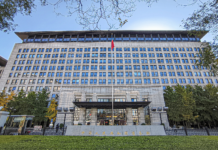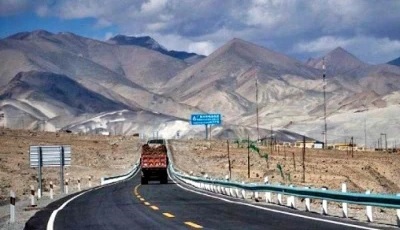— Terrorism, instability are major challenges
In the times of economic interdependence and global connectivity, the Belt and Road Initiative (BRI) and its flagship project, China-Pakistan Economic Corridor (CPEC), have transformed as engine of development and global connectivity.
The China-Pakistan Economic Corridor aims to connect China’s western regions with South Asia and the Arabian Sea via Pakistan’s Gwadar Port.
As a result, the CPEC was referred to as the Belt and Road Initiative’s (BRI) flagship project. These programs reflect a shared vision of prosperity by enhancing economies, boosting regional connectivity, and fortifying international ties. For Pakistan, CPEC is more than just a path to success; it is a lifeline to economic stability and progress.
However, there are other challenges that might compromise this journey’s potential, including terrorism and disinformation efforts. Pakistan nevertheless confronts a number of challenges on its path to prosperity, despite these positive developments. The most important of these is the persistent threat of terrorism, which still hangs over the nation’s hopes for development. Pakistan has suffered an incredible financial cost as a result of terrorism.
Over the previous 20 years, terrorism is thought to have caused the country to lose more than $126 billion in economic damages. Due to the perception of instability, international investors are reluctant to commit to large-scale projects, which causes critical infrastructure and economic efforts to be postponed. The human price is equally as high. Thousands of innocent people have been killed in acts of terror, upending families and wreaking havoc in local communities.
There is an unfathomable psychological cost to living under constant risk, as many inhabitants feel trapped in a vicious cycle of uncertainty and terror. A purposeful campaign of disinformation and propaganda against CPEC is compounding these difficulties. The project has been aggressively targeted for undermining by certain Western media outlets and neighbouring nations, who have referred to it as a “debt trap” or a geopolitical instrument for Chinese domination.
The development of Pakistan cannot take place without stable peaceful environment. Some western media and neighboring media negative propaganda against CPEC is a hurdle in long term development of Pakistan and as well for peace and stability and improving common Pakistani life. Some unseen obstacles and foreign-funded vicious demonstrations have brought halt to the development of Pakistan which has resulted in bad economy and inflation as well poverty. Because of terrorism many innocent citizens have lost lives.
However, these assertions frequently lack foundation and are motivated more by geopolitical conflicts than by dispassionate analysis. Pakistan’s growth is seen by several neighbouring governments as a danger to their own regional aspirations. Their geopolitical calculations are upset by a stable and prosperous Pakistan, especially when it comes to influence and commerce. They so turn to disseminating false information in an effort to cast doubt on the advantages of CPEC.
Stories that emphasise possible dangers over real advantages have also been spread by Western media. While conveniently disregarding the long-term economic benefits and the reality that many CPEC projects are organised through joint ventures rather than loans, critics point to Pakistan’s mounting debt burden.
The purpose of this misinformation is to discourage foreign investors, erode public trust in the initiative, and impede Pakistan’s advancement. Pakistan must be transparent, provide proof, and engage in proactive diplomacy to refute these myths. The Pakistani people’s tenacity is a source of optimism in spite of these difficulties.
People really support CPEC because they understand how it can change their life. In many places, improvements in infrastructure, energy availability, and job growth are already having a noticeable impact. Furthermore, the leadership of Pakistan has taken important action to resolve these issues. To safeguard CPEC-related projects, security measures have been stepped up, and counterterrorism initiatives remain a key priority.
In order to guarantee that the advantages of CPEC are felt by all facets of society, the government is also attempting to increase openness in the project’s execution. The success of CPEC is a triumph for regional stability and international economic integration, not just for Pakistan. The program has the ability to decrease poverty, generate opportunities, and fortify cross-border alliances by promoting commerce and connectivity.
But reaching these objectives calls for teamwork. In addition to addressing justifiable worries about debt management and environmental sustainability, Pakistan must have security and counterterrorism as its top priorities. Allies like China, meanwhile, must continue to be unwavering in their support of the project and help it overcome obstacles. There is a role for the international community as well. Stakeholders should acknowledge CPEC as a paradigm for sustainable growth and collaboration rather than giving in to divisive myths.
With its promise of regional integration and economic stability, CPEC is a ray of hope for Pakistan. Even while the obstacles are formidable—from misinformation efforts to terrorism—the possible benefits much exceed the dangers. Pakistan can turn its promise of growth into a reality by tackling these issues with solidarity, resiliency, and strategic vision. Even if the road ahead may be challenging, CPEC’s promise is too great to pass up.
With perseverance and teamwork, Pakistan can get over these challenges and become a 21st-century leader in development, connection, and collaboration.






















